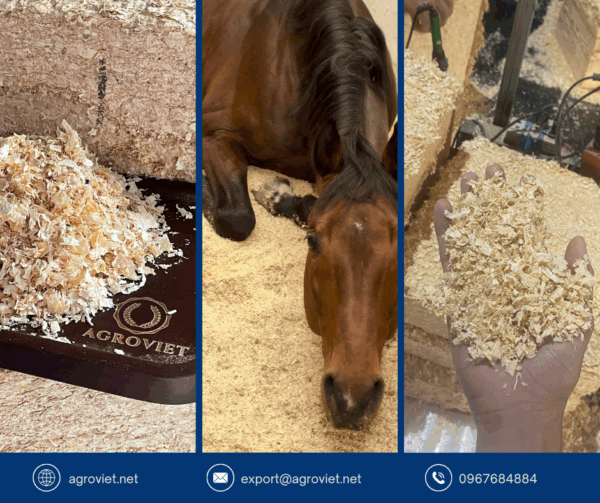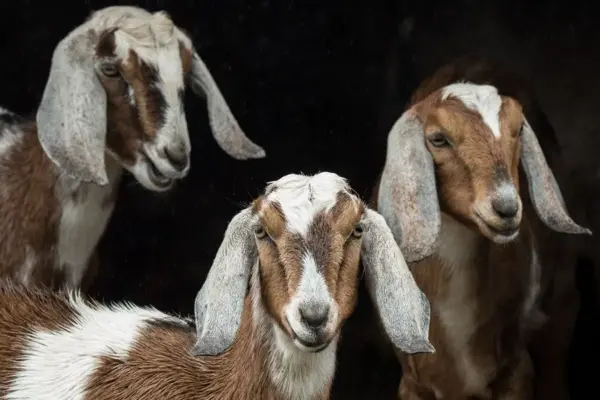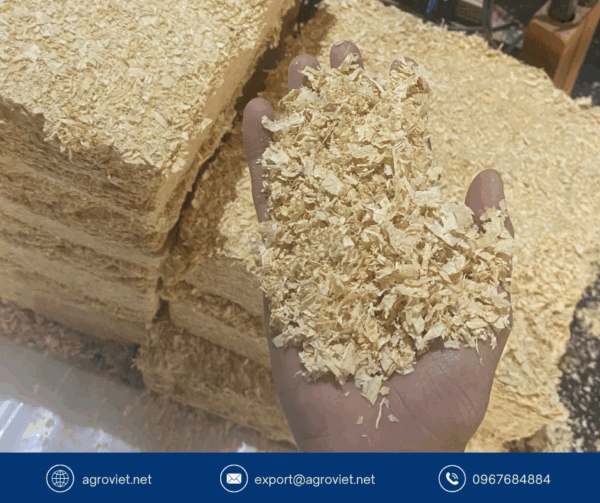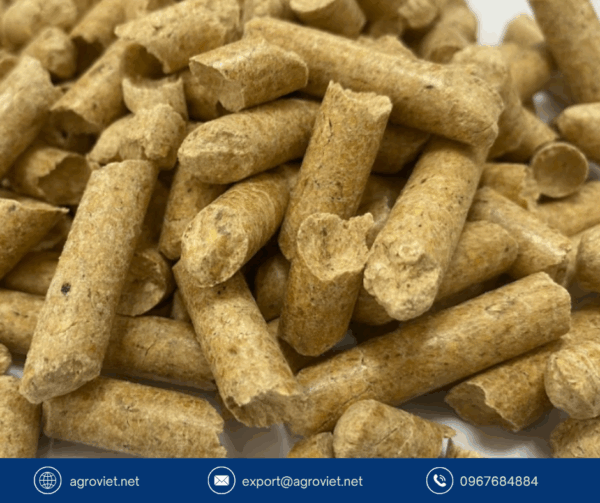No Bedding? Expect Hoof Rot, Pneumonia & 15% Calf Mortality

Introduction to Bedding and Calf Health
The absence of proper bedding or the use of wet floors in livestock housing, particularly during winter and spring, significantly increases disease outbreaks like hoof rot and pneumonia, leading to 15% calf mortality. Wet, bare floors or inadequate bedding like straw foster pathogens such as Fusobacterium necrophorum and Pasteurella multocida, raising infection rates by 30–40%, especially in colder, damp seasons. High-quality, kiln-dried wood shavings maintain dry floors, reducing disease incidence by 20–30% and enhancing calf survival, as supported by the MSD Veterinary Manual. This post explores how wet floors drive disease outbreaks, the economic and health impacts, and why wood shavings are a cost-effective solution for calf health.
The Danger of Wet Floors in Winter and Spring
Wet floors, whether bare concrete or covered with low-quality bedding like straw ($50–$100 per ton), create a pathogen-rich environment during winter and spring when humidity and cold exacerbate moisture retention. The MSD Veterinary Manual notes that floors with 30–50% moisture harbor bacterial loads of 10^6–10^8 CFU/g, driving hoof rot (20–35% incidence in calves) and pneumonia (20–35% in young stock). Ammonia from manure (30–60 ppm in wet conditions) irritates hooves and respiratory tissues, increasing infection risk by 25–35%. Without proper bedding, pathogen persistence rises by 30–40% in colder months, leading to frequent disease outbreaks and high calf mortality.
Health Risks and Calf Mortality
Wet floors significantly increase calf mortality through diseases like hoof rot and pneumonia. Hoof rot, caused by Fusobacterium necrophorum, affects 20–35% of calves on wet floors, with 5–15% mortality or culling due to lameness, per the MSD Veterinary Manual. Pneumonia, driven by Pasteurella multocida or Mycoplasma bovis, impacts 20–35% of calves in damp conditions, with 5–10% mortality from respiratory failure. Scours, linked to Escherichia coli and Cryptosporidium, affects 50–65% of calves on wet floors, contributing to 15% overall mortality in severe outbreaks. Subclinical infections reduce weight gain by 15–25%, delaying growth and increasing losses.
Economic Impact of Wet Floors
Wet floors drive substantial financial losses through disease and mortality. For a 100-calf operation, hoof rot costs $2,000–$7,000 annually, including $1,000–$3,000 in treatments (e.g., oxytetracycline, $20–$100 per dose), per LLM Farm Vets. Pneumonia costs $2,000–$6,000, with $1,000–$3,000 in antibiotics (e.g., tulathromycin, $20–$100). Scours add $3,000–$9,000, with $1,500–$4,500 in treatments (e.g., electrolytes, $10–$50). Mortality (15%) costs $1,500–$3,000 at $100–$200 per calf, while culling ($500–$1,000 per calf) and growth losses ($100–$300 per calf) push total losses to $9,000–$20,000 annually. Straw bedding, costing $1,200–$3,600, adds further expenses due to frequent replacement.
How Wet Floors Cause Disease Outbreaks
Wet floors sustain high moisture (30–50%) and organic matter, fostering pathogens like Fusobacterium necrophorum, Pasteurella multocida, and E. coli. The MSD Veterinary Manual notes that winter and spring conditions amplify pathogen survival by 30–40%, with cold, damp environments increasing pneumonia and scours incidence by 25–35%. Ammonia from manure irritates hooves and lungs, weakening immune defenses and raising infection risk. Wet floors also attract flies, spreading secondary infections like flystrike, which affects 10–20% of calves in severe cases. This cycle drives outbreaks, with 50–65% of calves on wet floors affected by disease, compared to 35–45% on dry floors.
The Solution: Kiln-Dried Wood Shavings
Kiln-dried wood shavings, sourced from softwoods like pine, prevent disease outbreaks by maintaining dry floors with moisture below 20%. Their absorbency (up to 200% of weight) inhibits pathogens by 20–30%, while kiln-drying eliminates microbial contamination. The MSD Veterinary Manual confirms that dry bedding reduces hoof rot (from 20–35% to 14–24%), pneumonia (from 20–35% to 14–24%), and scours (from 50–65% to 35–45%), lowering mortality from 15% to 5–9%. Wood shavings also reduce ammonia levels to below 10 ppm, supporting respiratory health and boosting immunity by 10–15%, per the University of Maine Cooperative Extension.
Economic Benefits and Cost Comparison
Kiln-dried wood shavings cost $150–$250 per 1-ton pallet, lasting 2–3 months for a 10-calf pen, or $600–$1,000 annually for a 100-calf operation ($0.07–$0.10 per head daily). Straw costs $1,200–$3,600 annually due to weekly replacements. Treatments for hoof rot, pneumonia, and scours (e.g., oxytetracycline, $20–$100; tulathromycin, $20–$100; electrolytes, $10–$50) cost $3,500–$10,500 annually for 50–65 cases in a 100-calf operation. Wood shavings reduce disease incidence by 20–30%, cutting treatment costs to $2,100–$7,350 and saving $1,400–$3,150. Reduced mortality (from 15% to 5–9%) saves $600–$2,000, while improved growth adds $2,000–$6,000 annually. Total savings reach $4,000–$11,150, yielding an ROI of 400–1,100%, per the University of Maine Cooperative Extension.
Promoting Calf Health with Wood Shavings
Wood shavings create dry floors that enhance calf health and reduce disease outbreaks, especially in winter and spring. Their absorbency inhibits Fusobacterium necrophorum, Pasteurella multocida, and E. coli, while low ammonia levels support respiratory health. The soft surface reduces stress, boosting immunity by 10–15%. Farms using wood shavings report 20–30% fewer cases of hoof rot, pneumonia, and scours, with mortality dropping to 5–9%. The MSD Veterinary Manual highlights that dry floors reduce pathogen loads, improving weight gain by 10–15% and reducing antibiotic use by 25–40%, ensuring healthier calves.
Cost-Benefit Analysis
For a 100-calf operation, wet floors lead to $9,000–$20,000 in annual losses, including $3,500–$10,500 in treatments, $1,500–$3,000 in mortality (15%), and $2,000–$6,000 in growth losses. Wood shavings, costing $600–$1,000 annually, reduce disease incidence by 20–30%, saving $1,400–$3,150 in treatments and $600–$2,000 in mortality. Growth gains add $2,000–$6,000, totaling $4,000–$11,150 in savings. Reduced culling saves $500–$1,000 per calf, and lower bedding costs save $600–$2,600 annually.
Long-Term Economic Benefits
Wood shavings provide lasting benefits by reducing disease recurrence, especially during winter and spring. Dry floors minimize reinfection, supporting immunity and cutting antibiotic use by 25–40%. Farms report 10–15% higher weight gain, adding $2,000–$6,000 annually for a 100-calf operation, per The Bullvine. Reduced drug costs save $8–$10 per calf annually and align with regulations, avoiding penalties. Lower mortality (from 15% to 5–9%) and culling save $500–$1,000 per calf, compounding savings over time.
Practical Tips for Bedding Management
Spread 3–5 bags (40 lbs each) of wood shavings per 10×10 pen, topping up with 1–2 bags weekly to maintain absorbency. Daily cleaning removes soiled litter, preventing pathogen buildup, as recommended by the MSD Veterinary Manual. Ventilation providing 6–8 air changes per hour maintains dryness, especially in winter and spring, while storing shavings in a dry area prevents mold. Sourcing from reputable suppliers ensures low-dust, non-toxic shavings, optimizing health benefits and reducing labor costs.
Complementary Prevention Strategies
Beyond bedding, vaccinations (e.g., clostridial vaccines, $5–$10 per calf) reduce pneumonia and scours risk. Regular health checks, including fecal tests ($50–$200), detect issues early, saving $100–$500 per calf. Sanitizing equipment and providing colostrum boost immunity, while electrolyte therapy ($10–$50 per case) supports scours recovery. These measures, combined with wood shavings, minimize disease outbreaks in winter and spring.
Welfare and Regulatory Benefits
Wood shavings enhance calf welfare by reducing disease-related pain and stress, aligning with ethical farming standards. A 25–40% reduction in antibiotic use supports sustainable production, meeting consumer demand and avoiding regulatory penalties. The MSD Veterinary Manual emphasizes that dry floors are critical for calf health, improving market competitiveness. Reduced culling saves $500–$1,000 per calf, enhancing farm reputation.
Addressing Bedding Management Challenges
Wood shavings cost more upfront ($150–$250 per ton) than straw ($50–$100), but their durability reduces replacement frequency, saving $600–$2,600 annually for a 100-calf operation. Daily cleaning and proper storage prevent mold, ensuring hygiene even in damp seasons. Reputable suppliers provide high-quality shavings, minimizing dust and toxins, making wood shavings a practical solution.
Conclusion
Wet floors drive hoof rot, pneumonia, and scours, causing 15% calf mortality and $9,000–$20,000 in annual losses for a 100-calf operation, with treatments costing $3,500–$10,500. Kiln-dried wood shavings, at $600–$1,000 annually, reduce disease incidence by 20–30%, saving $1,400–$3,150 in treatments and $600–$2,000 in mortality, especially in winter and spring. Supported by the MSD Veterinary Manual, wood shavings create dry floors, boosting immunity and growth by 10–15%. Total savings of $4,000–$11,150 and an ROI of 400–1,100% make wood shavings a smart investment. By adopting clean bedding and complementary strategies, farmers can protect calves and ensure sustainable, profitable operations.
Read more: https://vietnambestwood.com/general/why-mixed-wood-shavings-are-replacing/
